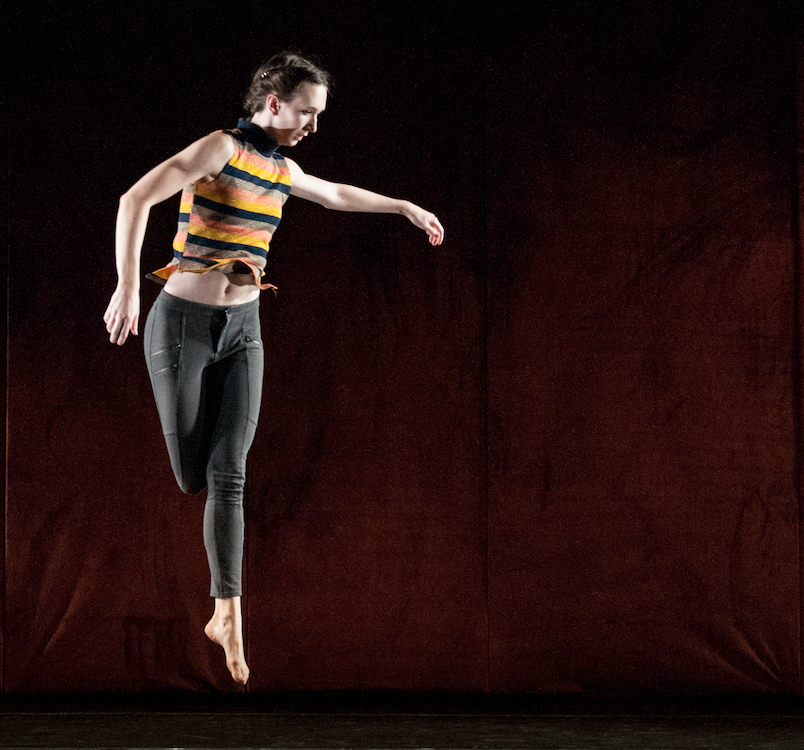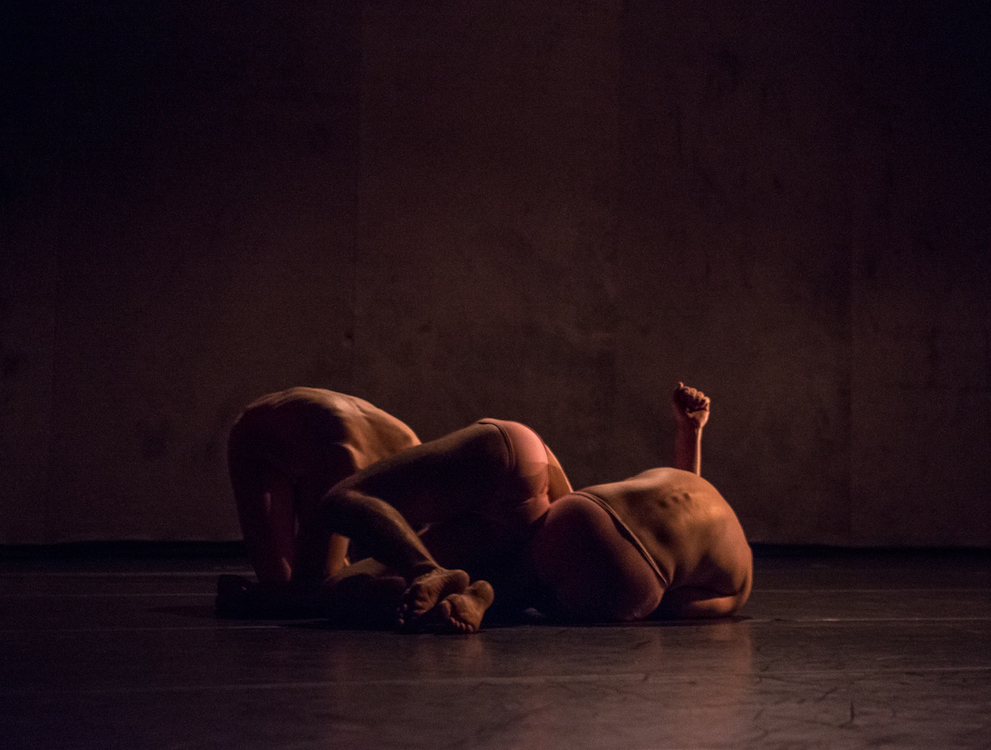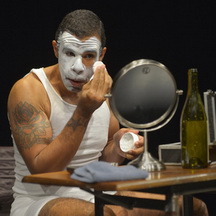Since the mid 20th century almost every art practice from the visual arts to performance has found the seductive powers of beauty troublesome. Too often it is accused of being the velvet glove for entrenched powers, a softening blow in league with oppression. So it is with some irony that Pavel Zustiak named his most recent performance piece, which premiered New York Live Arts in 2015, Custodians of Beauty. Cal Performances presented Custodians this past weekend at the Zellerbach Playhouse.
The phrase “custodians of beauty” was used by the last pope, Benedict XVI, in a 2009 plea to artists, assigning beauty the role of an antidote to despair and artists the role of custodians, and therefore healers. How Zustiak addresses this imposed relationship is less than clear, but rather becomes part of piece’s modus operandi.

Custodians begins with a loud synthetic prologue of music overlaying a projection on the front scrim that looks like a jagged representation of sound waves. The music is by Christian Frederickson, a five-time collaborator with Zustiak’s company Palissimo. The video is by Simon Harding, who also designed the sets, which are comprised of long panels of velour-like fabric – one burnt orange, the other a silvery gray – that form two walls on stage. The scuffed look of the colored fabric surfaces quietly engages the eye.
When the cacophonous beginning ends, the scrim is raised on the stage. An enormous san-serif type WORD appears projected on the back panel, which is lit in a vibrant red. The lights go down and when they come up again a dancer in black is standing with his back to the upstage wall. Thus, begins a series of dances comprised of one, two, or three dancers in various configurations, each grouping marked out by the lights dissolving and coming back up. All of the dancers’ movements in these short sequences are constrained by the wall at their back.
The lights go down and come up as a strip along the front of the stage. Performer Viktor De La Fuente performs a solo. Standing to the side of downstage center, his arm and hand movements are small and contained. He raises a finger. There is no sliding, leaping, or turning, only arms opening and curving as if sending semaphore signals to the audience below. The music abates.
Light darken. Suddenly a cloud of steam is released out over the audience, and hovers above like an ephemeral angelic message. A yellow light refracts within the haze. And then its airy whiteness slowly disperses.
When the light comes up again, the stage is dim, the three dancers are now curled nakedly on the stage. Only their backs face outwards: one dancer on her side, another seated upright, the third upright but upside down. They lean into each other like pale boulders. The music becomes the sound of waves along the shore. Slowly these stacked boulders move, edging closer into each other as if responding to the inexorable pull of gravity. A leg asserts itself. An arm. Slowly the bodies disentangle and elongate.

The performance continues. Like its opening it is a series of sketches, each minimal and abstract in visual presentation. The movements are slow and insistent, repetitions of every day moves whether bouncing from foot to foot, or lifting a hand in something like a wave. They are also minimal and abstract in concept. And there is a quality of randomness as each sketch segues into the next and forms into its own focused being that seems intentional, if that isn’t too much of an oxymoron.
What are we seeing? Hard to categorize, the performance doesn’t adhere to any structured dance. Is it beauty? Even harder to know, beauty tends not to be definable. Does it have meaning?
Let’s just say, it’s a gift.
– Jaime Robles
